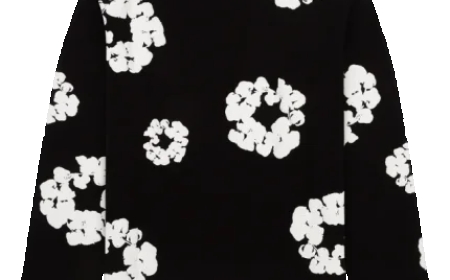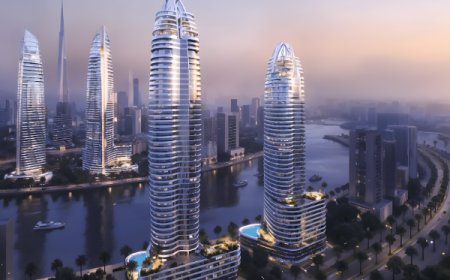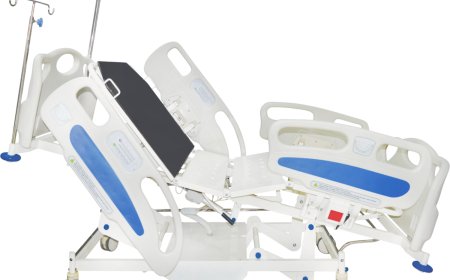How to Find Dive Bars in the Riverside Neighborhood
How to Find Dive Bars in the Riverside Neighborhood The Riverside neighborhood, with its winding riverfront paths, historic architecture, and eclectic local culture, is home to some of the most authentic, unpretentious, and character-rich drinking spots in the city. Among these, dive bars stand out—not for their polish, but for their soul. These are the places where the barstools are sticky, the n
How to Find Dive Bars in the Riverside Neighborhood
The Riverside neighborhood, with its winding riverfront paths, historic architecture, and eclectic local culture, is home to some of the most authentic, unpretentious, and character-rich drinking spots in the city. Among these, dive bars stand out—not for their polish, but for their soul. These are the places where the barstools are sticky, the neon signs flicker just enough to feel nostalgic, the jukebox plays 90s alt-rock on shuffle, and the bartender remembers your name after one visit. Finding a true dive bar in Riverside isn’t about searching for the loudest sign or the highest-rated Yelp listing. It’s about knowing where to look, how to interpret the subtle cues, and understanding the unspoken rules of these hidden sanctuaries.
For locals, dive bars are community anchors. For visitors, they’re portals into the real heart of the neighborhood—away from curated experiences and tourist traps. Whether you’re a seasoned bar-hopper, a new resident, or simply someone seeking genuine human connection over a cheap beer, learning how to find dive bars in Riverside is less about navigation and more about perception. This guide will walk you through the practical steps, insider strategies, tools, and real-world examples to help you uncover the most authentic dive bars Riverside has to offer.
Step-by-Step Guide
1. Understand What Defines a Dive Bar
Before you start searching, you need to know what you’re looking for. A dive bar is not defined by its cleanliness, decor, or price point alone. It’s defined by its ethos: unapologetically unpolished, deeply local, and resistant to commercialization. Common traits include:
- Low lighting and worn-in furniture
- Minimal signage—sometimes just a flickering neon word or a hand-painted sign
- Absence of TVs (or only one, tuned to sports)
- Prices under $5 for a domestic beer
- Staff who don’t smile on cue but remember your order
- No craft cocktails, no artisanal cheese boards, no Instagrammable walls
These bars often lack websites, social media accounts, or even regular hours. They operate on trust, habit, and reputation. If you find a place that feels like it hasn’t changed since 1987, you’re likely on the right track.
2. Start with Local Knowledge
The most reliable source of information about dive bars is the people who live and work in Riverside. Avoid relying solely on online directories. Instead, engage with locals:
- Strike up conversations with cashiers at corner stores, especially those near the river.
- Ask baristas at independent coffee shops—they often know where the regulars go after closing time.
- Talk to taxi drivers or delivery riders who work the neighborhood late into the night.
- Visit the local library or community center and ask for recommendations from staff.
These individuals aren’t promoting businesses—they’re sharing cultural knowledge. You’ll hear phrases like, “Oh, you mean the place with the broken door handle?” or “That’s where the old fishermen go after their shifts.” These are the clues you need.
3. Explore on Foot, Especially at Night
Dive bars in Riverside are rarely located on main thoroughfares. They’re tucked into side streets, behind laundromats, above auto repair shops, or in converted storefronts with peeling paint. The best way to find them is to walk—slowly, deliberately, and after dark.
Focus on these areas:
- Between 11th and 15th Streets along the riverbank
- Behind the old railroad tracks near Elm Avenue
- The alleyways off of Maple and 7th
- Any block with a cluster of shuttered businesses and one still-lit window
Look for signs of life: a faint hum of music, a line of motorcycles parked crookedly outside, a group of people laughing loudly in a dim doorway. These are not advertisements—they’re organic indicators.
4. Use the “No Menu” Rule
One of the most reliable indicators of a true dive bar is the absence of a menu. If the bar has a printed menu—especially one with photos—it’s probably not a dive. True dive bars have a limited selection: a few drafts, a handful of well liquors, maybe a bottle of whiskey on the back shelf that’s been there since the Clinton administration.
If you walk in and the bartender says, “What’ll it be?” without looking up, and you see a chalkboard with just three beers listed—two domestics and one local brew—you’ve found your spot.
5. Observe the Crowd
The clientele tells you everything. A dive bar’s regulars are rarely dressed for a night out. You’ll see construction workers in boots, retirees in flannel, artists with paint-splattered jeans, and long-time residents who’ve been coming since they were teenagers. There’s no pressure to conform. No one checks your shoes. No one asks for your drink preference beyond “beer or whiskey?”
If the room feels like a time capsule—where everyone knows each other’s stories, and silence is comfortable—you’re in the right place.
6. Look for the “No Cover, No Rules” Vibe
Dive bars don’t charge cover fees. They don’t enforce dress codes. They don’t have reservations. If you walk in and someone tries to sell you a “VIP experience” or asks for your ID before you order, walk out. Real dive bars operate on mutual respect, not transactional rules.
Some may have a sign that says “No shirt, no shoes, no problem,” or “We don’t judge, we just pour.” These are the good ones.
7. Check the Back Room or Side Door
Many of Riverside’s best dive bars have a hidden entrance—a side alley, a back door marked only by a faded sticker, or a staircase leading down. These spaces are often used for private gatherings, live music on weekends, or just a quieter place to sit away from the bar.
If you see a door with a handwritten note taped to it saying “Come in if you’re hungry,” or “Bar open till 2, kitchen closed,” that’s a strong signal. These are the places locals know about but won’t advertise.
8. Visit on Weekdays, Not Weekends
Weekend nights in Riverside are when the “fake dives” show up—places that try to mimic the vibe but end up feeling like themed bars. True dive bars are quieter on weekdays. That’s when the real regulars come: the night shift workers, the retirees, the people who just need a place to sit and breathe.
Go on a Tuesday or Wednesday evening. You’re more likely to find the bartender wiping down the counter alone, a few old-timers playing pool, and a jukebox playing “The Velvet Underground” on repeat. That’s the real thing.
9. Pay Attention to the Bar’s History
Many dive bars in Riverside have decades of history. Ask the bartender, “How long have you been here?” If they say, “Since ’92,” or “My dad opened this in ’78,” you’re likely in a place with roots. Look for old photos on the wall—grainy black-and-white shots of the same bar, same stools, same beer signs. These are the bars that have survived gentrification, economic shifts, and changing tastes.
Some of the oldest dive bars in Riverside have plaques or handwritten notes on the wall acknowledging their longevity. Don’t ignore them.
10. Trust Your Gut
At the end of the day, finding a dive bar is as much about intuition as it is about strategy. If a place feels wrong—too clean, too loud, too full of people taking selfies—it’s not a dive. If it feels like you’ve stepped into someone’s living room that happens to serve beer, you’ve found it.
There’s no algorithm that can replicate the feeling of walking into a place where the air smells like stale smoke, old wood, and cheap gin. That’s the scent of authenticity.
Best Practices
1. Be Respectful, Not a Tourist
One of the biggest mistakes visitors make is treating dive bars like attractions. These are not museums. They’re homes. Walk in quietly. Don’t take photos without asking. Don’t comment on how “quirky” or “authentic” the place looks. That kind of language makes locals defensive.
Instead, say “Thanks” when you get your drink. Make small talk if the bartender invites it. Tip generously—even if the beer is $3, leave $1. These places survive on tips and loyalty, not marketing.
2. Don’t Try to “Find the Best”
There’s no “best” dive bar in Riverside. There are only dive bars that suit your mood. One might be perfect for quiet reflection after work. Another might be where the jazz musicians jam on Thursdays. A third might be where the neighborhood gathers after a local football game.
Don’t chase rankings. Chase connection.
3. Visit Multiple Times
Dive bars reveal themselves slowly. The first time you walk in, you might get a nod. The second time, you might get your usual. The third time, someone might ask if you want to join their weekly poker game.
True dive bar culture is built on repetition. Be a regular, even if it’s just once a month. That’s how you earn your place.
4. Learn the Local Lingo
Every dive bar has its own shorthand. “A well” means a shot of the house liquor. “A tall one” is a larger beer. “The back” means the patio or the alley side. Learn these terms. Use them. It signals you’re not just passing through.
Don’t ask for a “craft IPA” unless you want to be politely ignored.
5. Bring Cash
Many dive bars in Riverside still operate on a cash-only basis. ATMs are rare, and card machines are often broken—or deliberately unplugged to avoid fees. Always carry a few twenties and some singles. It’s not just practical; it’s part of the ritual.
6. Don’t Rush
Dive bars aren’t meant to be consumed quickly. Sit. Sip. Listen. Watch. The stories will come. The laughter will grow. The silence will feel right.
Stay longer than you think you should. That’s when the magic happens.
7. Protect the Secrets
If you find a gem, don’t post about it on Instagram. Don’t write a blog review. Don’t tell your friends unless they’re truly ready for the experience. The magic of a dive bar is its obscurity. Once it becomes popular, it stops being a dive.
Be a guardian, not a promoter.
8. Know When to Leave
There’s a time to stay and a time to go. If the place feels closed off, if the bartender is clearly done for the night, or if you sense tension in the room—leave quietly. Don’t push. Don’t linger. Respect the space.
Dive bars are sanctuaries. They’re not open to everyone all the time.
Tools and Resources
1. Local Historical Societies
The Riverside Historical Society maintains archives of old business licenses, photographs, and oral histories. Their records often include listings of bars that operated in the neighborhood since the 1920s. Many of these have survived as dive bars. Visit their small office near the old train depot or check their website for digitized records.
2. The Riverside Free Press
This weekly community newspaper doesn’t have a website, but copies are available at the public library, corner grocers, and some diners. Every month, they feature a “Bar of the Month” section—usually a dive bar with a short, handwritten profile by a local writer. These are the most trustworthy reviews you’ll find.
3. Reddit: r/RiversideLocal
While most online forums are saturated with generic advice, r/RiversideLocal is an exception. It’s a quiet, moderated subreddit with under 5,000 members—all locals. Posts are rarely about tourism. Instead, you’ll find threads like:
- “Anyone know if Lou’s still open after the flood?”
- “Who plays drums at the back room on Tuesdays now?”
- “Is the jukebox fixed?”
These are the conversations that matter. Search for “dive bar,” “old bar,” or “quiet place to drink.” You’ll find real, unfiltered leads.
4. Google Maps with a Twist
Don’t search “dive bars in Riverside.” Instead, search:
- “Bar with no sign”
- “Bar with broken door”
- “Bar with pool table and no TVs”
- “Bar open till 2 am”
Then, look at the photos. If the images show mismatched chairs, a dusty neon sign, or a chalkboard with only three beers, you’re onto something. Check the reviews—look for ones that say “I’ve been coming here since 1995” or “My grandfather used to come here.” These are gold.
5. Local Music Venues
Many dive bars host live music on weekends—often acoustic sets, blues jams, or punk bands. Check out the calendars of small venues like The Velvet Lantern, The Rusty Nail, or The Back Porch. These places often double as dive bars during the week. The musicians know where the real spots are.
6. Used Bookstores and Vinyl Shops
Independent bookstores and record shops in Riverside often have bulletin boards with flyers for local events. Look for flyers advertising “Open Mic at Joe’s” or “Cheap Beer Night at The Gutter.” These are usually dive bars with no online presence.
7. The Riverside Public Library’s Local History Room
Not a tourist trap. Not a café. Just a quiet room with microfiche machines, old city directories, and a librarian who knows everything. Ask for “business licenses from the 1970s” or “bars listed in the 1985 phone book.” Cross-reference the addresses. Many of those bars still exist—just without a sign.
8. City Planning Department Archives
For the deeply curious, the city’s planning department keeps records of building permits, zoning changes, and liquor license transfers. You can request documents from the 1960s–1990s that show which establishments were granted liquor licenses—and which ones have remained unchanged. Some of the oldest dive bars in Riverside have never changed ownership.
Real Examples
1. The Rusty Nail
Located in a converted 1923 auto shop at 1027 Maple Avenue, The Rusty Nail has no website, no social media, and no sign on the street. The only indicator is a single rusted metal nail hammered into the doorframe. Inside, the walls are lined with old license plates, and the bar is made from a repurposed tractor hood. The beer is $3.50. The whiskey is poured from a bottle that’s been taped back together. The regulars include a retired mechanic, a poet who writes on napkins, and a woman who brings her cat every Tuesday.
It opened in 1971. It’s still open.
2. Lou’s Place
Named after Lou, who ran it from 1968 until his passing in 2018, this bar is now run by his daughter, Maria. It sits behind a laundromat on 14th Street. The entrance is through a swinging door with a bell that doesn’t ring. The jukebox only plays vinyl—no digital playlist. The menu? “Beer, whiskey, and whatever’s left.”
There’s a handwritten note on the wall: “Lou said if you’re here, you’re family.”
3. The Gutter
Technically, it’s called “The Gutter Bar & Grill,” but no one calls it that. It’s located under the old railroad bridge near the river bend. The bar is built from salvaged railroad ties. The lights are from a 1950s diner. The owner doesn’t speak unless spoken to. But if you order a beer and sit at the end of the bar, he’ll hand you a napkin with a doodle of a fish on it—his signature.
He says it’s because “the river remembers.”
4. The Last Call
On the corner of 7th and Elm, this bar has been open since 1947. It has no bathroom. The floor is concrete. The stools are metal. The beer is served in mason jars. The owner, a man in his 80s, still pours drinks with one hand while reading the paper with the other.
There’s a sign above the door: “If you’re looking for a party, go somewhere else. If you’re looking for peace, sit down.”
5. The Basement
There’s no sign. No name. Just a door in the alley behind a pawn shop. You have to knock three times. If someone opens it and says, “You here for the music?” you go in. If they say, “You lost?” you leave.
Inside, it’s a basement converted into a listening room. No TVs. No drinks on the menu. Just a barrel of beer on tap, a few stools, and a guy who plays old blues records on a turntable. It’s open only on Fridays, from 9 p.m. to 1 a.m.
Word of mouth is the only way in.
FAQs
Are dive bars safe?
Yes—when you approach them with respect. Dive bars in Riverside are generally safe because they’re tightly knit communities. The regulars look out for each other. But like any public space, use common sense. Go during reasonable hours. Don’t bring valuables. Trust your instincts. If something feels off, leave.
Can I bring a friend who’s new to the city?
Absolutely. But prepare them. Tell them: “Don’t expect a menu. Don’t take pictures. Don’t ask for a cocktail. Just order a beer and listen.” If they’re open to it, they’ll love it. If they’re looking for a “vibe,” they might be disappointed.
Do dive bars serve food?
Sometimes. But it’s not the point. If there’s food, it’s usually simple: hot dogs, chips, maybe a grilled cheese. Don’t go for the food. Go for the atmosphere.
What if I don’t like beer?
Most dive bars carry whiskey, rum, or vodka. Just say “well” and they’ll pour you a shot. If you’re not a drinker, many dive bars still welcome you. Sit at the end of the bar. Read a book. Listen to the stories. You don’t have to drink to belong.
Why do some dive bars have no bathrooms?
Many were built before modern plumbing codes. Others removed bathrooms to save space or because they were rarely used. It’s part of the charm. If you need one, ask the bartender—they’ll tell you where the nearest public restroom is.
Can I host a private event at a dive bar?
Unlikely. Most dive bars are too small and too personal for events. But if you know someone who’s a regular, they might be able to ask the owner. Don’t assume. Don’t push. If the answer is no, respect it.
Do dive bars ever close?
Yes. Many have closed due to rising rents, gentrification, or the passing of the owner. That’s why it’s so important to visit while they’re still open. The ones that remain are the ones that matter.
Is it okay to ask for a recommendation?
Yes—but only if you ask the right way. Don’t say, “Where’s the best dive bar?” Say, “I’m new here. I’m looking for a place that feels like it’s been here forever. Any spots you’d recommend?” That’s how you get the truth.
Conclusion
Finding a dive bar in the Riverside neighborhood isn’t about checking boxes or ticking off a list. It’s about slowing down, tuning in, and allowing yourself to be surprised. These bars are not destinations—they’re experiences. They’re the quiet corners of the city where time moves differently, where people are more real than their profiles, and where a $3 beer can feel like a gift.
The dive bars of Riverside have weathered decades of change because they never tried to change themselves. They didn’t chase trends. They didn’t need likes. They just kept pouring, keeping the lights on, and letting the world come through the door.
When you find one, don’t just visit it. Honor it. Sit a while. Say thank you. And if you’re lucky, you’ll leave with more than a drink—you’ll leave with a story.
So go. Walk the side streets. Knock on the back doors. Listen for the hum of a jukebox. And when you find that place—the one with the sticky floor and the quiet laughter—know this: you didn’t find it. It found you.





































